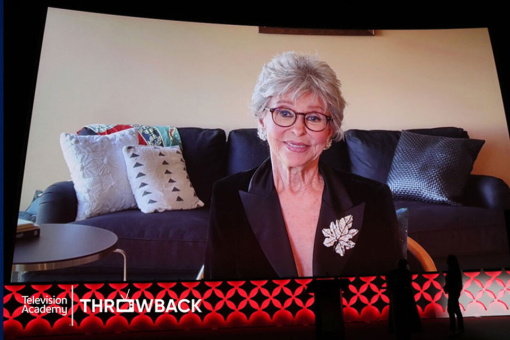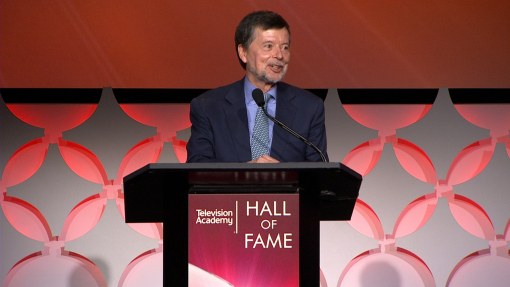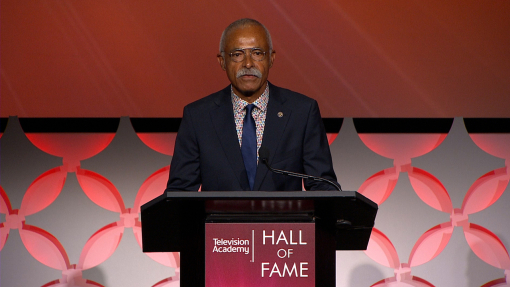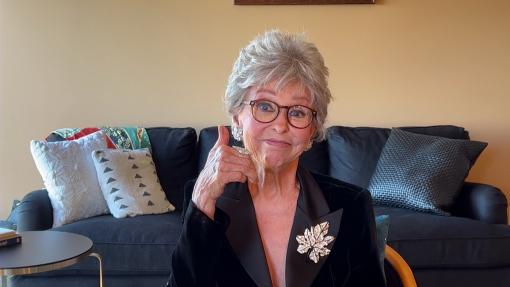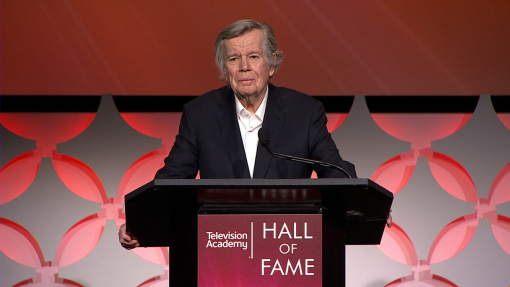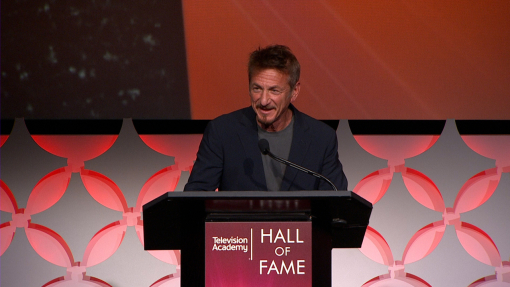Born in a log cabin in Beaver, Utah, in 1906, Philo T. Farnsworth could only dream of the electronic gadgets he saw in the Sears catalogue. But in 1918, when his Mormon family moved by covered wagon to his uncle's Rigby, Idaho, ranch, little Phil saw wires stretched across poles. "This place has got electricity," he declared.
He soon became the ranch electrician, rebuilding a Delco generator and electrifying a hand-cranked washing machine. In science magazines he found in the attic, he read about mechanical techniques used to transmit images and realized the systems could not send enough lines per frame to create a coherent image.
Then, in the summer of 1921, while plowing a field with a horse-drawn disc harrow, he eyed the furrowed rows. It hit him "like a bolt," wife Elma "Pem" Farnsworth told the Television Academy Foundation's Archive of American Television, prior to her death in 2006: "I can scan it like you read a book, one line to the other."
Farnsworth, then 14, realized he could convert images to electrons and back again. "At that moment television arrived on the planet," says Paul Schatzkin, author of The Boy Who Invented Television. He sees the vacuum tubes. He sees the magnetic fields and he sees electrons bouncing around in the vacuum tubes.
"It's like the pinch of an hourglass. When he has that conception and, a few years later, he proves it on his lab bench in San Francisco, it's the pivot point. All the technology for TV that came before became obsolete, and all the technology that came after became possible."
In 1922, Farnsworth sketched his idea for Rigby High chemistry teacher Justin Tolman. The teacher encouraged him: "If you want to badly enough, you'll do it."
Indeed, the teen was driven. As Martin Kaplan, director of USC Annenberg's Norman Lear Center, notes, "A boy in rural Idaho ... dreams up an invention that would change the course of human creativity, commerce and culture. If you pitched that to the networks as a true story, no one would believe it. But without Philo T. Farnsworth, there'd be no networks to pitch to."
Farnsworth's son, Russell "Skee" Farnsworth, 77, a New York musician, added: "One of my father's advantages paradoxically was his lack of education. He solved problems that conventionally trained electronic engineers wouldn't touch."
Farnsworth built everything from scratch, starting with the first workable camera tube, the Image Dissector, which created an electrical counterpart to the image. "The most difficult part of the equation was getting a high-resolution signal," says Schatzkin, a Nashville-based author and entrepreneur.
Pem, whom the inventor met in Provo, Utah, saw Farnsworth's energy. "He was so full of life and he had very penetrating deep blue eyes," she recalled in the Archive interview.
After brief stints in the Navy and at Brigham Young University, Farnsworth delivered radios and made electrical repairs. In 1926, philanthropists George Everson and Fes Gorrell invested $6,000 and lured Farnsworth to Los Angeles. He decided to go, but made a momentous decision prior to leaving — he asked Pem's father for his daughter's hand. "I can see you need Pem more than we do," the father said.
But things got off to a rocky start. On their wedding night, Farnsworth left Pem at the hotel to return a car. By the time he returned, she was seething. "There's another woman in my life," he confessed, adding, "and her name is television."
He enlisted Pem's help in achieving his dream: "He saw countries being able to see what the other country is like," she recalled. "They could settle their differences over a conference table rather than on the battlefield. And he saw it as a big educational tool, and also for entertainment."
The couple moved to Hollywood in 1926, setting up a home laboratory. Pem did everything, from record keeping to welding. Three months later, they flipped the switch on their first system — and it exploded.
Dusting themselves off, they moved to San Francisco, armed with $25,000 from Crocker Bank. Farnsworth recruited Pem's brother, Cliff Gardner, to learn glass blowing, to make the tubes. On Sept. 7, 1927, they tried again. With the camera in one room, they viewed the first grainy image — a straight line — on a receiver in another. "I was dancing around," Pem recalled. "I knew from his shaking hands [Philo] was emotionally impacted. But he said, 'Well, there you've got television.'"
Farnsworth received so much press that Douglas Fairbanks and Mary Pickford came to see his creation, but glitches marred that demonstration. Three years later, in 1930, Farnsworth received the first of more than 165 American patents he would be granted governing television.
Meanwhile, RCA's David Sarnoff knew electronic television was the next frontier, but RCA wasn't researching it. "The Radio Corporation does not pay patent royalties, we collect them," Sarnoff declared. So he recruited Westinghouse engineer Vladimir Zworykin, who had patented his own camera tube, the Iconoscope, in 1923, which was not successfully demonstrated. By 1930, Westinghouse had lost interest in Zworykin's research.
But Sarnoff was interested, so he dispatched Zworykin to San Francisco to see what Farnsworth was up to. Farnsworth, hoping Westinghouse would license his technology, gave Zworykin free rein for three days. At one point, Zworykin held the Image Dissector Tube. Legend records that, holding it, he said, "This is a beautiful instrument. I wish I had invented it." They demonstrated how to make tubes with flat glass adhered to one end, something that differed from Zworykin's earlier patents.
"We did not know it couldn't be done, so we just went ahead and did it," Farnsworth's brother-in-law Cliff said.
Zworykin telegrammed Westinghouse with instructions. He returned to Farnsworth's lab, long enough to pick up the tube, and then promptly went to work for RCA in Camden, New Jersey. Within three years Zworykin claimed a new Iconoscope patent he filed for was identical to the one he had patented in 1923.
Meanwhile, RCA tried to buy Farnsworth's company, for $100,000, but he refused; RCA then attempted to develop patents that worked around Farnsworth's patents.
In 1931, Farnsworth moved his team to Philadelphia, after Philco Radio agreed to license his technology. RCA's Camden operations were just across the Delaware River, so the competing teams intercepted each other's broadcasts. But the arrangement wouldn't last long. Farnsworth, grieving over the death of his thirteen-month-old son Kenny, from strep throat (Farnsworth would later invent a baby incubator as a result of the experience), soon left Philco to form his own company.
At the Franklin Institute in 1934, Farnsworth demonstrated TV to the public. People waited for hours for a glimpse of the 12-by-12-inch screen. Farnsworth aired ventriloquists, animal acts, and a cellist who stopped playing when the hot lights blistered his instrument's finish. Audiences were mesmerized. "It was magic," Pem recalled.
That year an intense patent dispute between Farnsworth and RCA began. RCA questioned that Farnsworth was fourteen when he got the idea. But after Farnsworth's teacher, Tolman, produced the teen's 1922 diagram, the judge ruled for the inventor. However, litigation between RCA and Farnsworth continued and was protracted.
Nevertheless, in 1935, Farnsworth created an experimental station, W3XPF, in Philadelphia, scouring the landscape for talent. Few people owned televisions; there were no broadcast standards. But there were early stars: Baby Delores, a four-year-old singer, and Smiles Blum, age eleven, a.k.a. "Little Miss Television." Mary Pickford briefly appeared on camera under the hot lights. "Phew, this is hotter than color," she said.
Finally, in 1939, RCA agreed to buy a license from Farnsworth, who received a $1 million down payment. In April, at the New York World's Fair, Sarnoff "introduced" television to the world. "And now we add sight to sound," he declared.
Shortly thereafter, Farnsworth's health faltered and he retreated to a Maine farmhouse, where he spent time building a trout pond. World War II put everything on hold and he helped with the war effort. After the war, Farnsworth Television and Radio Corporation did make televisions in Fort Wayne, Indiana, but by 1949, ITT took over Farnsworth's nearly bankrupt company. "Just as television is exploding across the landscape, the company formed around the man who invented it failed," Schatzkin says.
Farnsworth moved on and started researching nuclear fusion. "He was so deep into quantum forces and particles that he was unraveling the mysteries of the universe," says Schatzkin. He developed a "fusor," fusion reaction tubes he hoped would provide clean and unlimited energy. He even spoke by phone with Albert Einstein, who encouraged him to publish his findings. He never did. How close he got to developing fusion remains a mystery. "Did he see the path and step off, or did he see a dead end and turn around? I don't know," Schatzkin says.
Philo T. Farnsworth never became a household name. On July 3, 1957, he made his only national TV appearance, on I've Got A Secret. Host Garry Moore introduced the reed-thin inventor as "Dr. X " and Farnsworth ended up stumping the panel. "Unfortunately, television being what it is, it's your baby and we're out of time," Moore said. "So, here are your Winstons, sir, the money that you won, and our eternal gratitude. I'd be out of work if it weren't for you."
After Farnsworth died of pneumonia in 1971 at the age of 64, Pem nurtured his legacy. The Postal Service issued a stamp dedicated to him, San Francisco installed a plaque commemorating the 1927 transmission, and his statue stands in the U.S. Capitol. Television and film writer-producer Aaron Sorkin wrote a play, The Farnsworth Invention. Farnsworth always wanted to travel to space, but the closest he got was watching Neil Armstrong's historic walk on the moon in 1969 — on television. As Pem recounted, when the camera emerged from the lunar module and Armstrong declared the "giant leap for mankind," Phil turned to her: "Pem, this has made it all worthwhile."
This tribute originally appeared in the Television Academy Hall of Fame program celebrating Philo T. Farnsworth’s induction in 2013.


